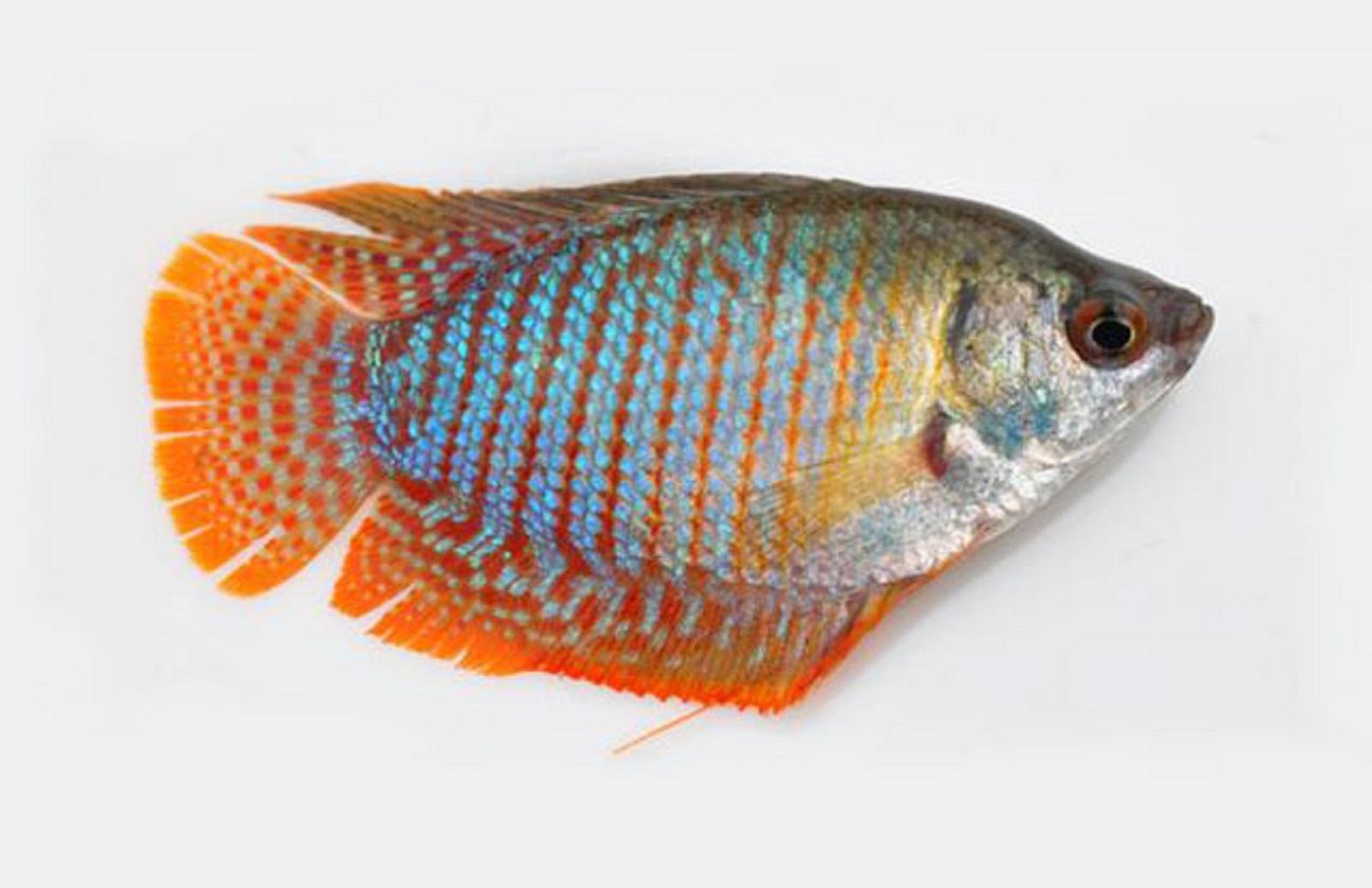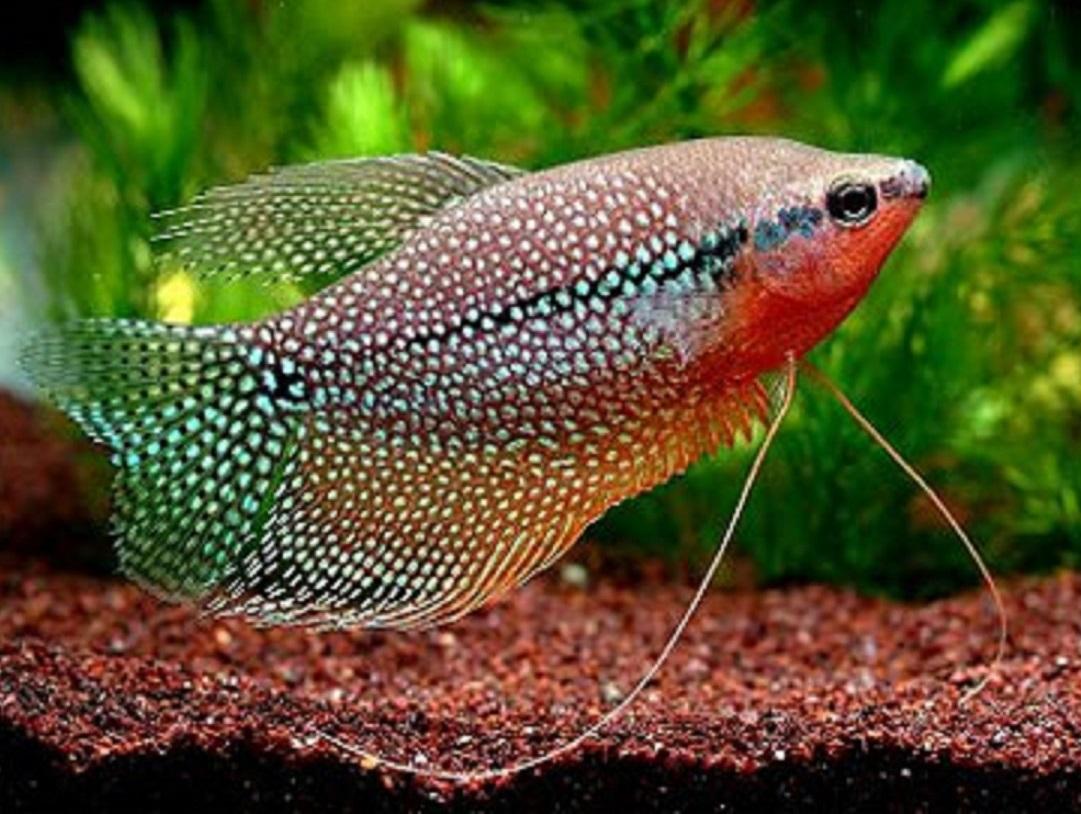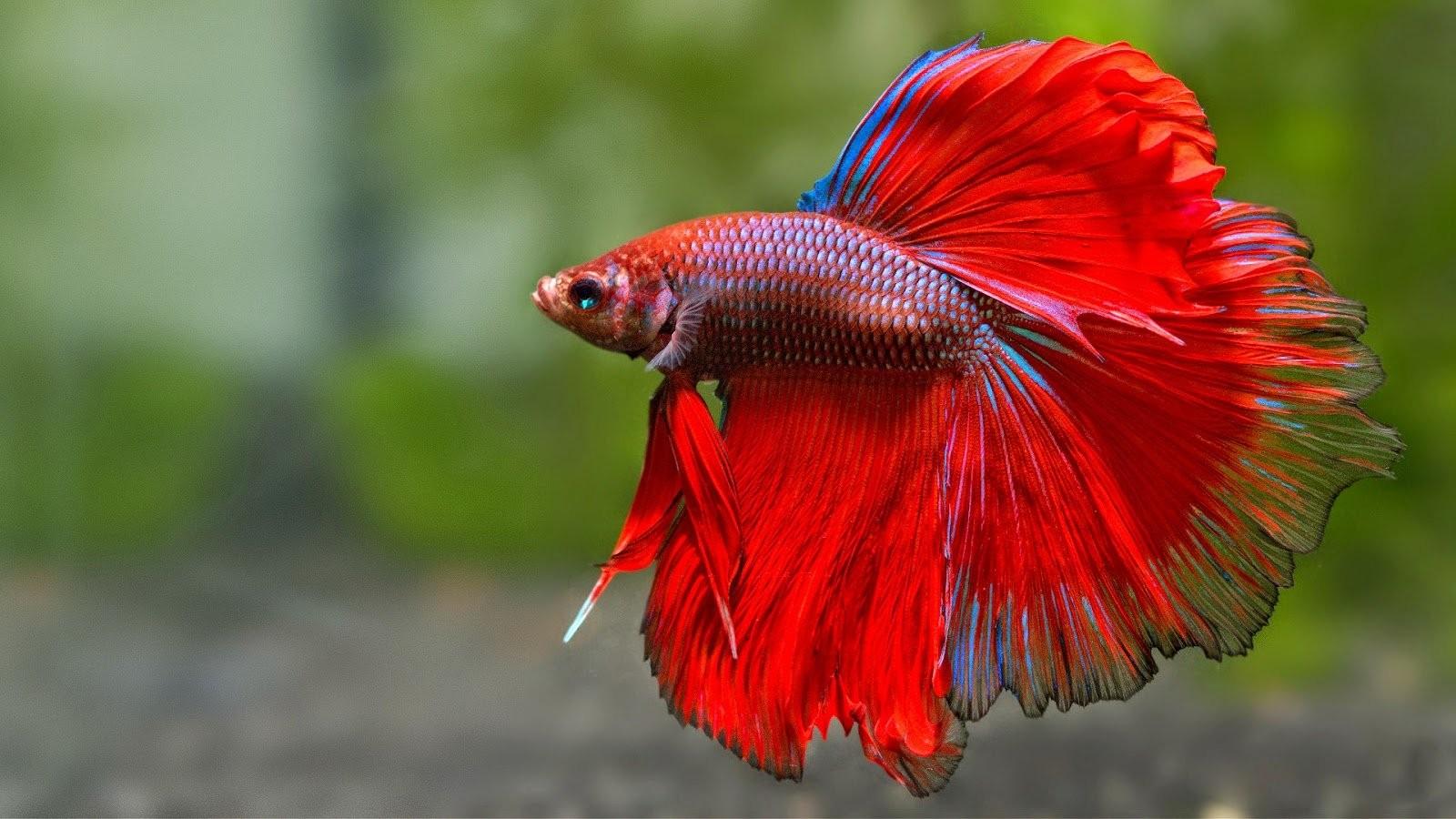Nest-builders of Ornamental fishes
Nest-builders of Ornamental fishes
Nest-builders build their nests with fine leafed and floating materials on the substrate of the gravel or sand. They should hence be provided with material with which the nests are built.
Among the nest builders, the Gourami and their relatives are most popular. They are called as labyrinth or anabantid fishes and belong to four families. About 70 species are from tropical Africa and South East Asia. The characteristic feature of these fishes is that they have an accessory respiratory organ, the labyrinth an extension of the gill chamber, and situated behind the eyes/ gill region of the head. Under low oxygen conditions, these fishes engulf the atmospheric oxygen for which they come to the water surface. Many of the anabantids are bubble nest builders and incubate their eggs in floating nests, especially made by the male fish.
Commercially important species
Among the nest-builders, the dwarf Gourami, kissing Gourami, Pearl Gourami, Siamese fighter fish and Chinese paradise fish are considered as commercially important species.
Dwarf Gourami
- Name of the species: dwarf gourami, Trichogaster lalius (Hamilton, 1822)

- Family: Osphronemidae
- Size: up to 8.8 cm
- pH: 6.0 – 8.0
- Temperature: 25 – 28oC
- Food habit: Omnivorous
- Distribution: Pakistan, India and Bangladesh
Description: The body is oval shaped with strong lateral compression. The anal and dorsal fins begin in the front part of the body and extend nearly to the fan shaped caudal fin. The ventral fin is long and filamentous. Males are generally orange-red with numerous transverse strips which are light blue colour. The back is orange, and the belly is silver turquoise. The dorsal, caudal and anal fins are in orange with a pattern of light blue markings. The ventral fin is also orange. Females are dull in colour.
Kissing gourami
- Name of the species: Kissing gourami, Helostoma temminkii (Cuvier, 1829)

- Family: Helostomatidae
- Size: up to 30 cm
- pH: 6.0 – 8.0
- Temperature: 22 – 28oC
- Food habit: Omnivorous
- Distribution: Thailand to Indonesia
Description: Fish has larger lips with elongated and oval shaped body. The pointed-head carries a thick-lipped mouth. They exist in two colours, namely olive green with a greenish iridescence and pinkish white with white iridescent. Both colour species do not have colour fins, only rays retaining the body colour.
Pearl gourami
- Name of the species: Pearl gourami, Trichopodus leerii (Bleeker, 1852)

- Family: Osphronemidae
- Size: up to 12 cm
- pH: 6.0 – 8.0
- Temperature: 24 – 28oC
- Food habit: Omnivorous
- Distribution: Malay Peninsula, Thailand and Indonesia
Description: The elongate oval body is slightly obscured by broad anal fin. A mosaic of spot covers silvery orange body and fins, and uneven dark line joints snout to caudal peduncle. Males have long dorsal fins and are bright orange on the throat, chest, pelvic fins and in front of the anal fins.
Siamese fighting fish

- Name of the species: Siamese fighting fish, Betta splendens (Regan, 1910)
- Family: Osphronemidae
- Size: up to 6.5 cm
- pH: 6.0 – 8.0
- Temperature: 24 – 30oC
- Food habit: Omnivorous
- Distribution: Mekong basin in Asia
Description: Fish has an elongated and laterally compressed body, with a upturned mouth. Fins may be long and flow or cropped. Colour varies, as do the fins.
Breeding and seed production of Dwarf Gourami
This fish comes from eastern India, where it lives in still and heavily weed infested waters. It may reach a length of 5 cm. Female is less brightly coloured than the male and has a more rounded dorsal and anal fins than the male. For the breeding purpose, males and females are kept separately in different tanks for a few weeks and fed with live food. When female abdomen are distended with eggs, it is transferred to the smaller breeding tank with a water level of 12. – 15 cm, with the water temperature of 28 – 30OC. The tank should have plenty of fine leaf plants such as Cabomba or Myriophyllum and some floating weeds like Eichhornia or Pistia. The required ideal water hardness and pH are about 100 – 200 ppm and 7.0 – 7.5 respectively.
After one or two days, a mature male is introduced into the breeding tank. A transparent perforated plastic sheet or a glass is covered over the tank to keep the humidity and temperature at a high level, which helps to maintain bubble nest in good condition. The male soon begins building a bubble nest. This is done by engulfing a large gulp of air at the water surface and converting it into many smaller bubbles that pass into gill chamber and are coated with an anti-burst agent before release.
After making a nest, the courtship usually ends with both fish embracing near the nest resulting in deposition of large numbers of eggs in the nest. After breeding, the female is to be removed. The male guards the eggs, which remain attached to the floating bubble nest. Within 24 hours, hatching takes place. The moment, the fry leaves the nest, the male is removed from the tank. After 36 hours, when young ones are in the free-swimming stage they are fed with infusoria as starter feed. After a few weeks, they start taking newly hatched Artemia, and small cladocerans. During this stage, fry requires vigorous feeding. Subsequently, on growing little bigger, they can be stocked in larger cemented tanks for further growth. They also accept all kinds of formulated feed.
Breeding and seed production of Siamese fighting fish
Adult fish attains a length of 6 cm with regard to sexual dimorphism. The male's dorsal, caudal, anal and ventral fins are longer and may become extremely veil shaped. The cultured betta is variable in colour such as white, orange, green, blue, crimson and almost black which are reared in aquaria. After attaining sexual maturity, male become aggressive, and they always have life and death struggle for territories. This character gave the species its name fighting fish. If the female does not spawn even after the male makes bubble nest, the male becomes furious and kills the female.
Bettas get sexual maturity at approximately three months of age, but it is best to attempt breeding with fishes that are about 9 – 12 months old. Allow one male to every two or three females, taking care to choose females that are at least of the same size as the male. The male individuals are kept in small aquaria with a capacity of two to five litres water. Since fighter's have a labyrinth organ, aeration is not necessary. The only regular maintenance required to be taken up is to change 50 – 75% of the water every week. Less aggressive females are also kept together in one aquarium containing 20 – 25 litre water. Another breeding tank containing 50-litre water, with a depth of 15 cm and having fine leaf plants like Myriophyllum or. Cabomba is required at this stage. The tank has to be partitioned into two halves with a fine meshed net. In one portion female is placed and in other mature male is kept. Optimum water temperature is about 27OC.
Male starts building a bubble nest quite quickly and once this is underway, the partition net is removed. At this crucial point, the male should accept the female; otherwise male starts vigorous display of chasing which ultimately leads to fin tearing of female. If the fin tearing occurs, the female is quickly removed, and the same type of female is replaced after few days. Fighter often spawns in the early morning. Upto 15 eggs may result from one embrace, and this is repeated many times during a period of few hours to give a final brood of 200-300 eggs (although brood of 600 and more eggs have also been recorded). As the eggs are shed and fertilised, they settle in the tank base. The male fish then collects them in his mouth and spits them into the bubble nest.
At the end of spawning female is removed, but the male is left as he guards the nests for several days. However, after 3 days of spawning, the male is removed as well; otherwise, it may eventually eat young ones.
The Eggs hatch after 36-48 hours. The smaller fry becomes free swimming after 5-6 days when they accept infusoria or egg-yolk milk several times a day. After 3 or 4 days, the fry accepts fine dry foods. The small fry develops a labyrinth organ when they are about 3 to 4 weeks of age. At this time, it is vital that the air above the tank remains warm and humid, and hence a covering with glass or plastic sheet is recommended. If the air is too cool, fish may die. The males and females should be sorted out before they grow and start fighting.
References
- Ahilan, B., Felix, N. and Santhanam, R. 2008. Textbook of Aquariculture. Daya Publishing House, New Delhi.
- Fish base. http://www.fishbase.org/search.php
- Ornamental fish production and management, online e-learning on Agricultural Education
- Swain SK., Sarangi, N. and Ayyappan S. 2010. Ornamental fish farming. Indian Council of Agricultural Research, New Delhi.
Last Modified : 5/31/2024
This topic provides information about brood stock ...
The topic provides information about the grow out...
This topic provides information related to culture...
This topic provides details about species profile,...
